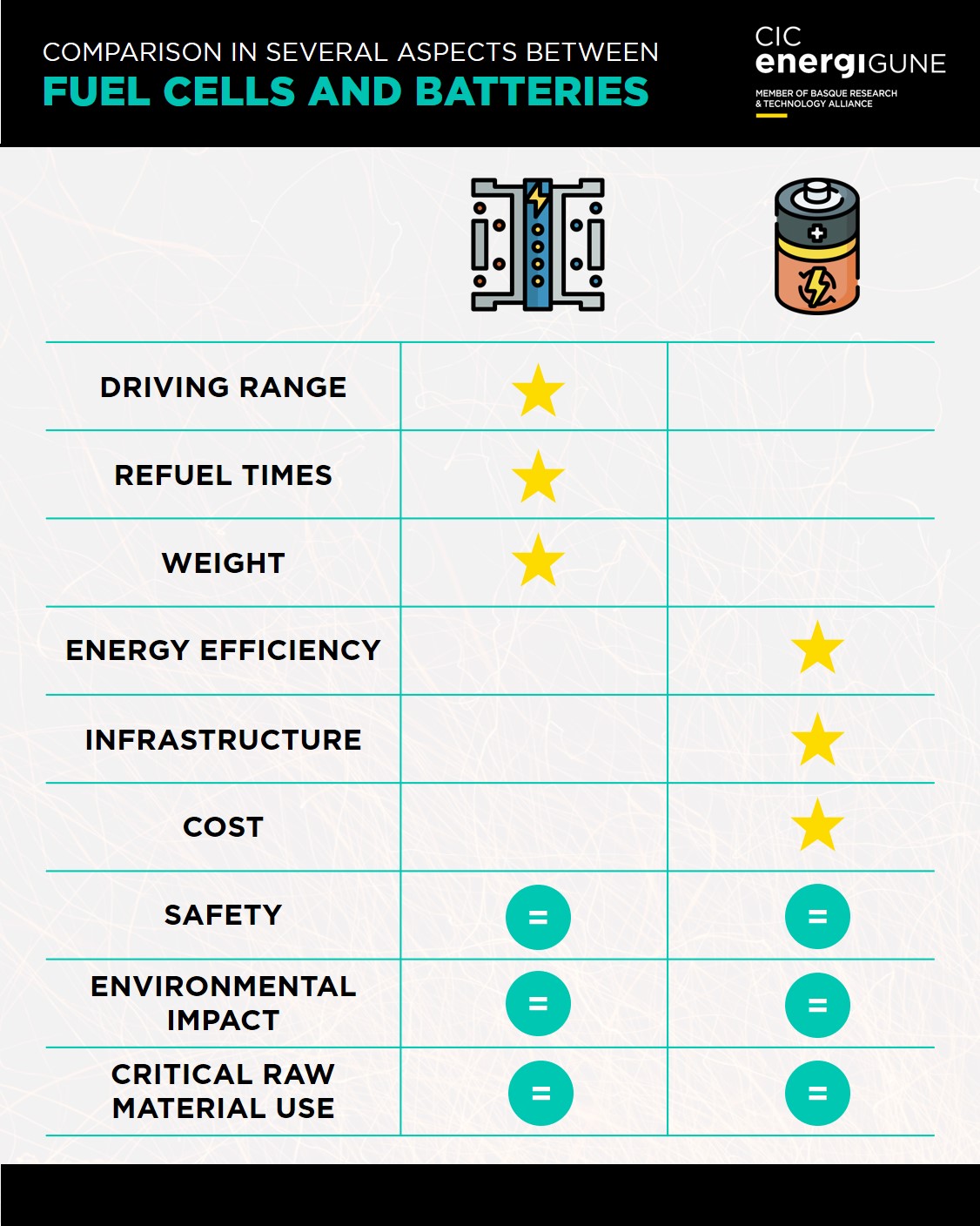As the world transitions toward more sustainable energy sources, both hydrogen fuel cells and battery electric vehicles (BEVs) are emerging as key contenders for the future of transportation. Each technology presents its own set of advantages and disadvantages, making them suitable for different applications and scenarios. Ultimately, the future landscape of transportation is likely to involve a coexistence of both hydrogen and batteries, resulting in a more diverse and resilient energy landscape.
Advantages of Hydrogen Fuel Cells
One of the primary advantages of hydrogen fuel cells is their potential for providing longer driving ranges compared to most battery electric vehicles (BEVs). This characteristic makes hydrogen particularly appealing for applications that require extended operational periods without frequent refueling, such as long-haul trucking, buses, vessels and other heavy-duty vehicles. The ability to cover greater distances on a single refuel positions hydrogen as a strong candidate in sectors where range anxiety and refueling frequency are critical concerns.
In addition to their longer range, hydrogen fuel cells offer the benefit of quicker refueling times compared to recharging electric vehicles. Refueling a hydrogen-powered vehicle typically takes just a few minutes, akin to the time it takes to fill a conventional gasoline tank. This rapid refueling capability is especially advantageous in commercial applications where minimizing downtime is essential for maintaining operational efficiency. For industries reliant on continuous vehicle operation, such as logistics and public transportation, the speed of hydrogen refueling could be a significant factor driving its adoption.
Moreover, hydrogen fuel cells and tanks tend to be lighter than the large batteries required for long-range electric vehicles. This reduced weight can make hydrogen a more practical option for certain vehicle types, particularly in scenarios where vehicle weight directly impacts performance, fuel efficiency, and payload capacity. For example, in the aviation industry, where every kilogram of weight is a critical consideration, hydrogen´s lightweight characteristics could offer a compelling alternative to heavy battery systems.
Challenges of Hydrogen Fuel Cells
However, despite these advantages, hydrogen fuel cells are not without their challenges. One of the key limitations of hydrogen vehicles is energy-efficiency because the conversion of electrical energy to motion in BEVs is more direct. In contrast, hydrogen fuel cells involve a multi-step process where hydrogen is first produced, then distributed, and finally converted back into electricity to power the vehicle. Each of these steps incurs energy losses, making hydrogen fuel cells less efficient overall. This difference in efficiency could be a significant factor in determining the viability and competitiveness of hydrogen in the transportation market.
Another critical factor influencing the adoption of hydrogen fuel cells is the current state of infrastructure development. While charging infrastructure for electric vehicles has been rapidly expanding and is becoming more widespread in many regions, hydrogen refueling stations are still relatively scarce. The lack of a well-established hydrogen infrastructure poses a significant barrier to the widespread adoption of hydrogen-powered vehicles, particularly in regions where the necessary refueling networks are not yet in place. The development of hydrogen infrastructure requires substantial investment, and without a robust network of refueling stations, consumers and businesses may be hesitant to commit to hydrogen vehicles.
Cost considerations also play a pivotal role in the in the comparison between hydrogen fuel cells and batteries. The cost of batteries has been steadily decreasing over the past decade, driven by advancements in technology, economies of scale, and increased competition in the market (initiatives promoting innovation in battery technologies, along with subsidies for manufacturers, have solidified China’s dominance in the global market). As a result, battery electric vehicles have become more affordable for consumers, making them a more accessible option for the general public. In contrast, the production and infrastructure costs associated with hydrogen remain relatively high. Hydrogen production, particularly green hydrogen generated from renewable sources, is still an expensive process. Furthermore, the cost of developing and maintaining hydrogen refueling infrastructure adds an additional financial burden. These economic challenges could slow the adoption of hydrogen vehicles, particularly in cost-sensitive markets.










